Coloring Games for Toddlers: Play & Learn Colors
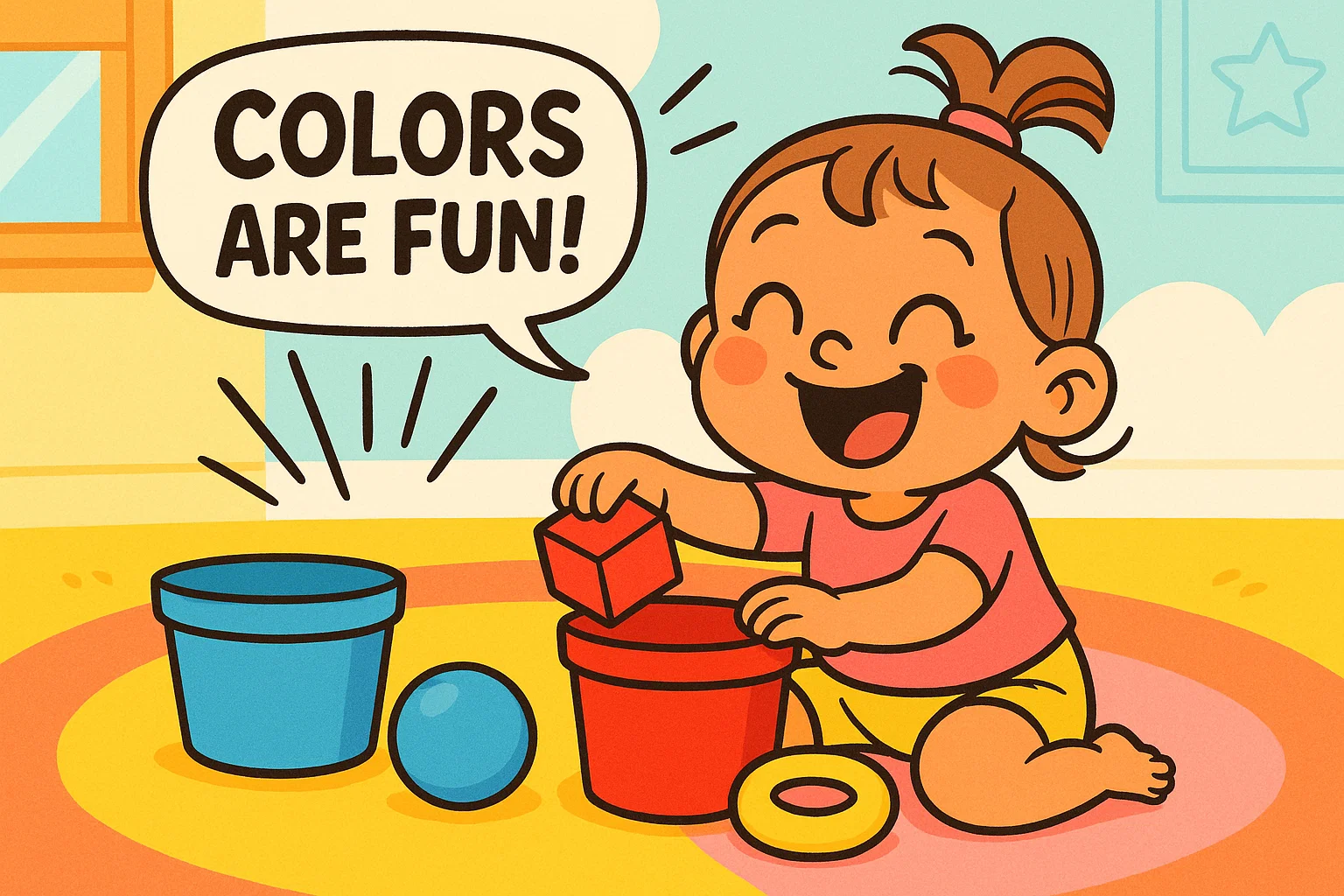
Teaching young children about colors doesn’t need to feel like a chore. When you combine education with play, toddlers absorb information naturally while having fun. These learning experiences create opportunities for exploration, discovery, and skill-building that extend far beyond simply naming shades. Whether you’re a parent looking for engaging activities or an educator seeking fresh approaches, the right mix of hands-on and digital experiences can make this journey both effective and enjoyable.
Why Color Games Matter: Benefits for Toddler Brains
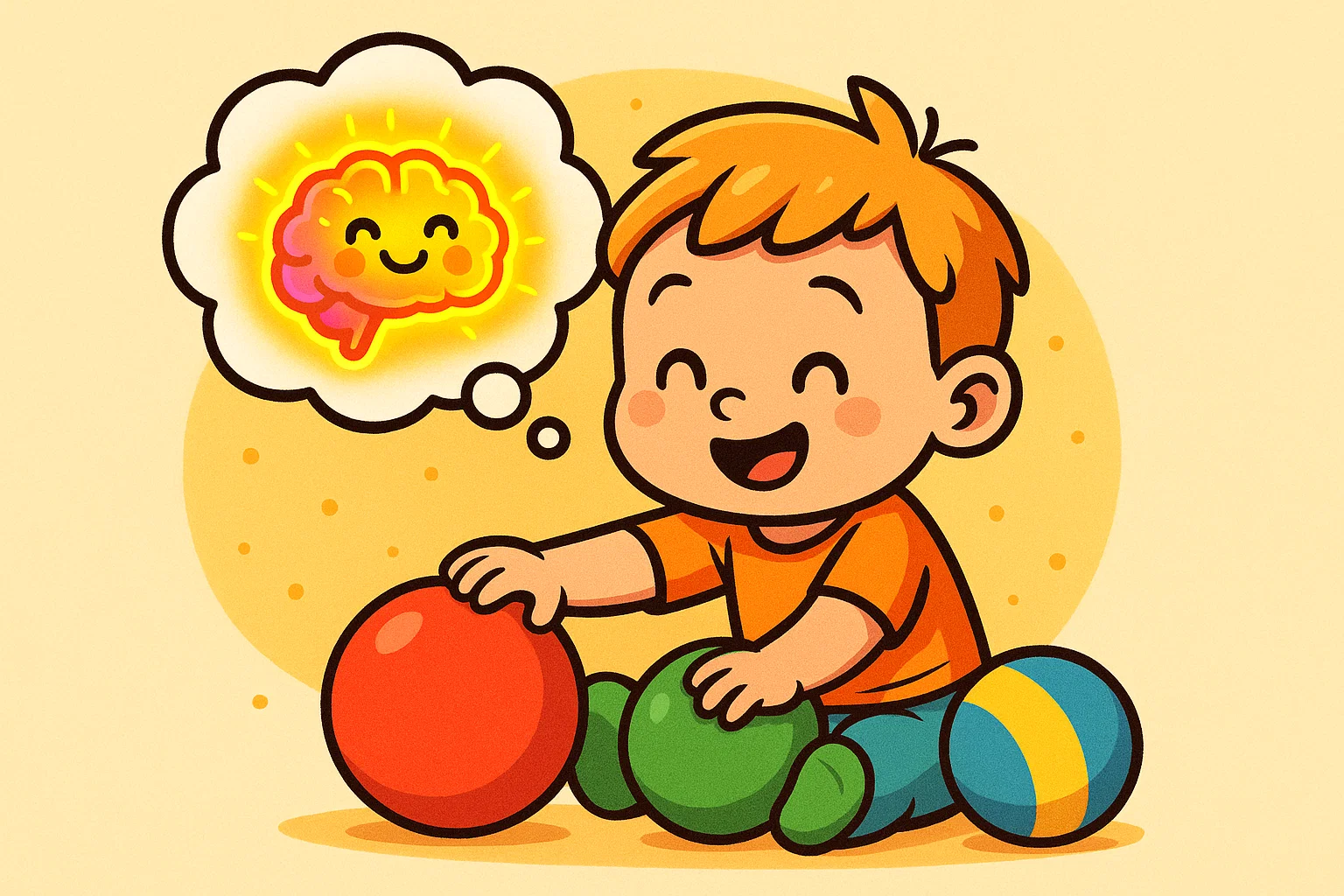
It’s more than just knowing a name; it’s about brain power! Discover the profound impact that fun color play has on your toddler’s cognitive development, language, and future learning ability.
How Color Recognition Sharpens Cognitive Skills
Recognition represents more than memorizing names. When toddlers identify shades, they’re practicing observation, comparison, and classification. These mental processes prepare them for mathematical thinking, reading comprehension, and problem-solving.
Children who engage regularly with visual learning activities often show improved memory retention. Associating hues with objects—”red apple,” “blue sky”—creates mental anchors that support vocabulary growth and conceptual understanding.
Using Colors to Build Language Vocabulary
Every activity becomes a language lesson. As you play, describe what you see: “Let’s find three green toys” or “Can you give me the yellow block?” This running commentary models sentence structure and introduces descriptive language naturally.
Language benefits from these activities:
- Expanded vocabulary through repeated exposure to descriptive words
- Understanding of adjectives and how they modify nouns
- Practice with prepositions (in, on, under, beside)
- Development of question-and-answer conversational skills
- Improved listening comprehension
Toddlers absorb new words most effectively through context and repetition. These experiences provide both. After playing several times, you’ll likely hear your child using descriptive words spontaneously throughout the day.
Color Activities Improve Hand-Eye Coordination
Physical coordination develops through practice. When children reach for objects, drop pom poms into matching containers, or paint within spaces, they’re training their eyes and hands to work together precisely.
This coordination matters for countless daily tasks: eating with utensils, getting dressed, catching a ball. These activities make this practice engaging rather than tedious, so children stay motivated to keep trying.
Color Play Fosters Imagination and Creativity
Open-ended activities spark creative thinking. A child might declare that purple pom poms are grapes, or use blue blocks to build an ocean. This imaginative play develops storytelling abilities and flexible thinking.
Creativity flourishes when children feel free to explore without rigid rules. While structured experiences have their place, leaving time for unstructured play lets toddlers develop their own ideas and express themselves uniquely.
Top Educational Color Games for Early Learning
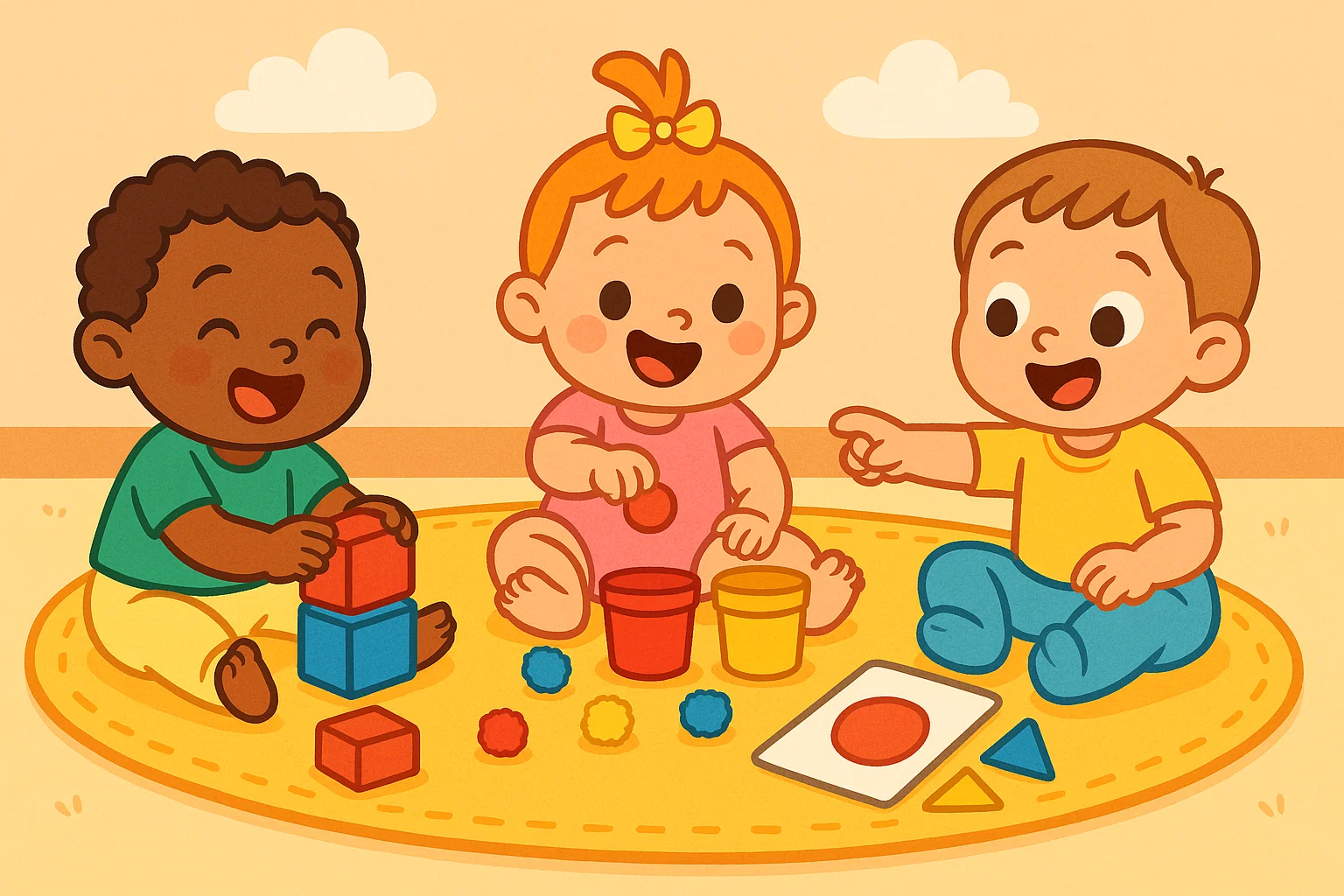
Ready to start the fun? Let’s dive into the core activities. These simple ideas use everyday items to build essential color recognition and fine motor skills from the ground up.
Simple Color Sorting Activities Using Toys
Sorting remains one of the most fundamental activities for early childhood development. Start with toys your child already has—blocks, plastic animals, or small cars. Place several bowls or containers around your play area and let your toddler sort items by shade. This simple activity helps children recognize hues while developing organizational thinking.
Benefits of sorting activities:
- Strengthens categorization skills that form the foundation for complex cognitive tasks
- Encourages independent thinking as children create their own sorting rules
- Develops pattern recognition through repeated practice
- Builds decision-making abilities in a low-pressure environment
You might also notice your child beginning to group items by size or type alongside their appearance. This independent thinking shows their brain making new connections.
Hands-On Color Matching Boosts Fine Motor Skills
Matching games work beautifully for developing precision and control. Create matching cards using construction paper, or use painted clothespins that clip onto corresponding paper plates. As toddlers grip small objects and place them carefully, they’re strengthening the hand muscles needed for writing.
These activities also build concentration. When a child focuses on finding the right shade of blue among several options, they’re practicing sustained attention—a skill that sometimes gets overlooked but matters tremendously for school readiness.
Mess-Free Color Mixing Art Projects
Not every parent wants paint splattered across the kitchen. Mess-free alternatives let children explore without the cleanup stress. Fill sealed plastic bags with different colored paints, tape them to a window or table, and let your toddler squish the bag to mix shades. They’ll see yellow and blue become green right before their eyes.
Another approach uses clear contact paper. Stick tissue paper squares onto the sticky surface, layer them, and watch new hues appear where pieces overlap. These activities introduce basic theory concepts in ways that feel like pure play.
Create a Rainbow Sensory Bin for Play
Sensory bins engage multiple senses simultaneously, making learning more memorable. Fill a large container with rice, pasta, or water beads in various shades. Hide small toys inside and encourage your toddler to find specific hues. This activity combines recognition with tactile exploration and fine motor practice.
What to include in your sensory bin:
- Primary shades (red, blue, yellow) for beginners
- Colored rice or pasta as the base material
- Small toys or objects hidden throughout
- Scoops, cups, and sorting containers
- Tweezers or tongs for advanced fine motor challenges
Start with primary options. As your child masters red, blue, and yellow, gradually introduce secondary shades like purple, orange, and green. The sensory bin becomes an evolving tool that grows with their abilities.
Practical, Low-Prep Color Activities Parents Must Try
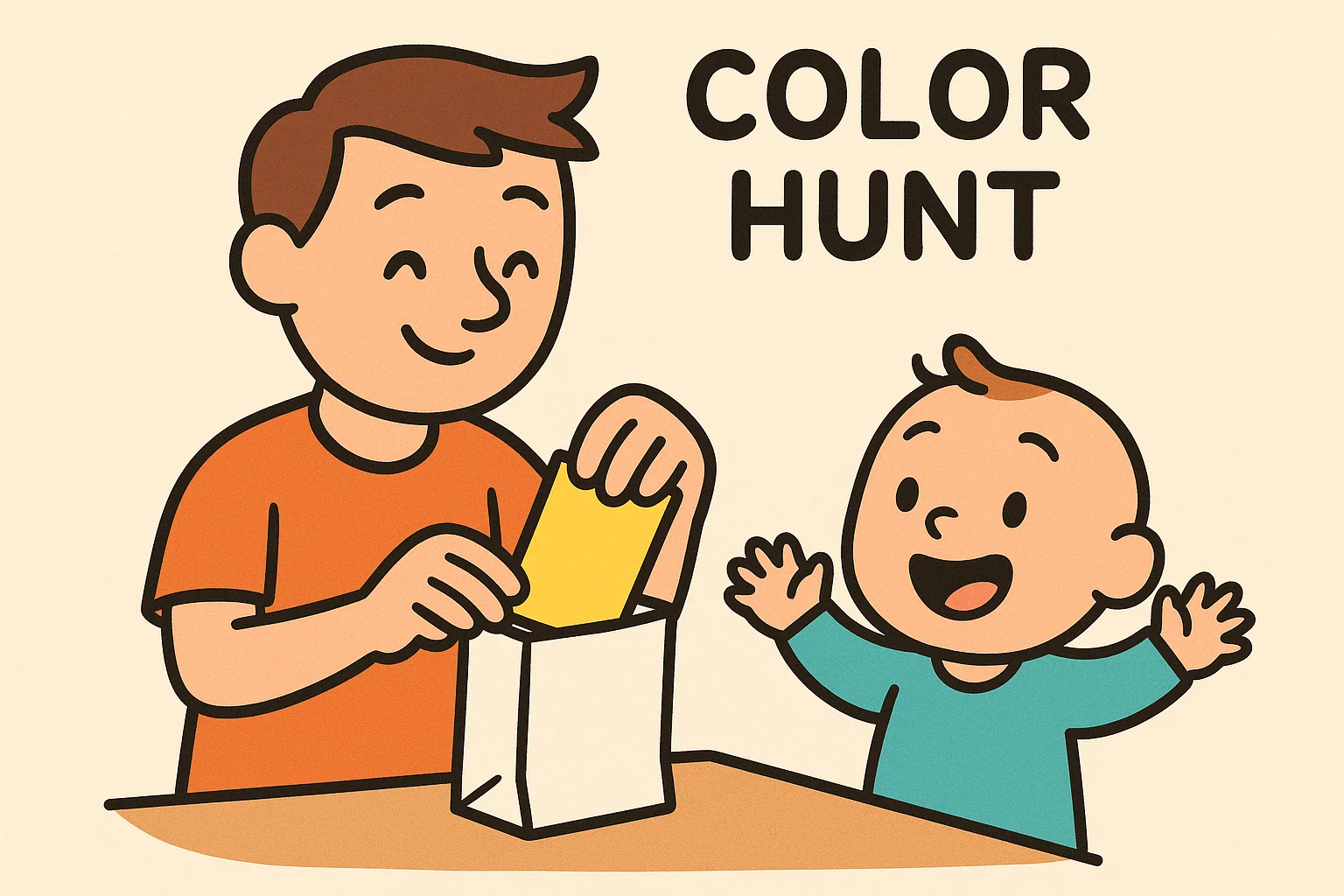
You don’t need fancy toys to teach colors. Grab a few simple things from around the house! We’ve rounded up the best, most effective activities that require minimal setup time.
Easy Indoor and Outdoor Color Scavenger Hunts
Scavenger hunts transform any environment into a learning space. Call out a shade and challenge your toddler to find something matching. Indoors, they might locate a red cushion or green plant. Outside, nature offers endless options: yellow dandelions, brown bark, orange leaves.
Ideas for scavenger hunt variations:
- Time-based challenges: “Find 5 red things in 2 minutes”
- Category-specific hunts: “Find something blue you can wear”
- Multi-sensory searches: “Find something green and soft”
- Counting combinations: “Bring me 3 yellow items”
This activity gets children moving while reinforcing knowledge. It also teaches observation skills as toddlers scan their surroundings carefully. To increase difficulty, ask them to find multiple items of the same shade or specific objects like “something blue and round.”
DIY Color Puzzles with Household Supplies
You don’t need to buy expensive materials. Cut construction paper into simple shapes—circles, squares, triangles. Mix them up and have your child sort by shade, then by shape. This dual-category sorting challenges their thinking.
Another option: paint popsicle sticks in matching shades and let your child arrange them. As they line up the sticks, they’re working on pattern recognition and sequencing alongside identification.
Fast Color Matching Games Using Paint Chips
Paint chips from hardware stores are free, sturdy, and perfect for activities. Create matching pairs, play memory exercises, or use them for sorting. Their durability means they withstand toddler handling better than paper.
Creative ways to use paint chips:
- Memory matching games with pairs of chips
- Gradient sorting from lightest to darkest
- Color name learning with labeled chips
- Scavenger hunt reference cards
- DIY flashcards for on-the-go learning
You might also create a gradient arrangement, organizing chips from lightest to darkest. This introduces concepts of shade and tone in an age-appropriate fun way that toddlers can understand and manipulate.
Fun with Sidewalk Chalk Paint
Mix cornstarch with water and food coloring to create washable sidewalk paint. Let your toddler “paint” the driveway or patio with brushes or their fingers. They’ll explore shades while enjoying outdoor play and fresh air.
This activity combines art with gross motor movement. Children crouch, stretch, and move their whole bodies as they create, building strength and coordination naturally through play.
Color Bingo and Pom Pom Toss
Bingo adapts traditional gameplay for preschoolers. Instead of numbers, use squares in different shades. Call out hues and help your child find and mark them. This teaches listening skills, recognition, and taking turns—valuable social skills.
Pom pom toss adds a physical challenge. Set up containers in various shades and have your child toss matching pom poms inside. This practices aim, matching, and counting (if you track successful tosses). Plus, it’s active enough to burn energy on rainy days.
Get Them Moving: Active Color Games
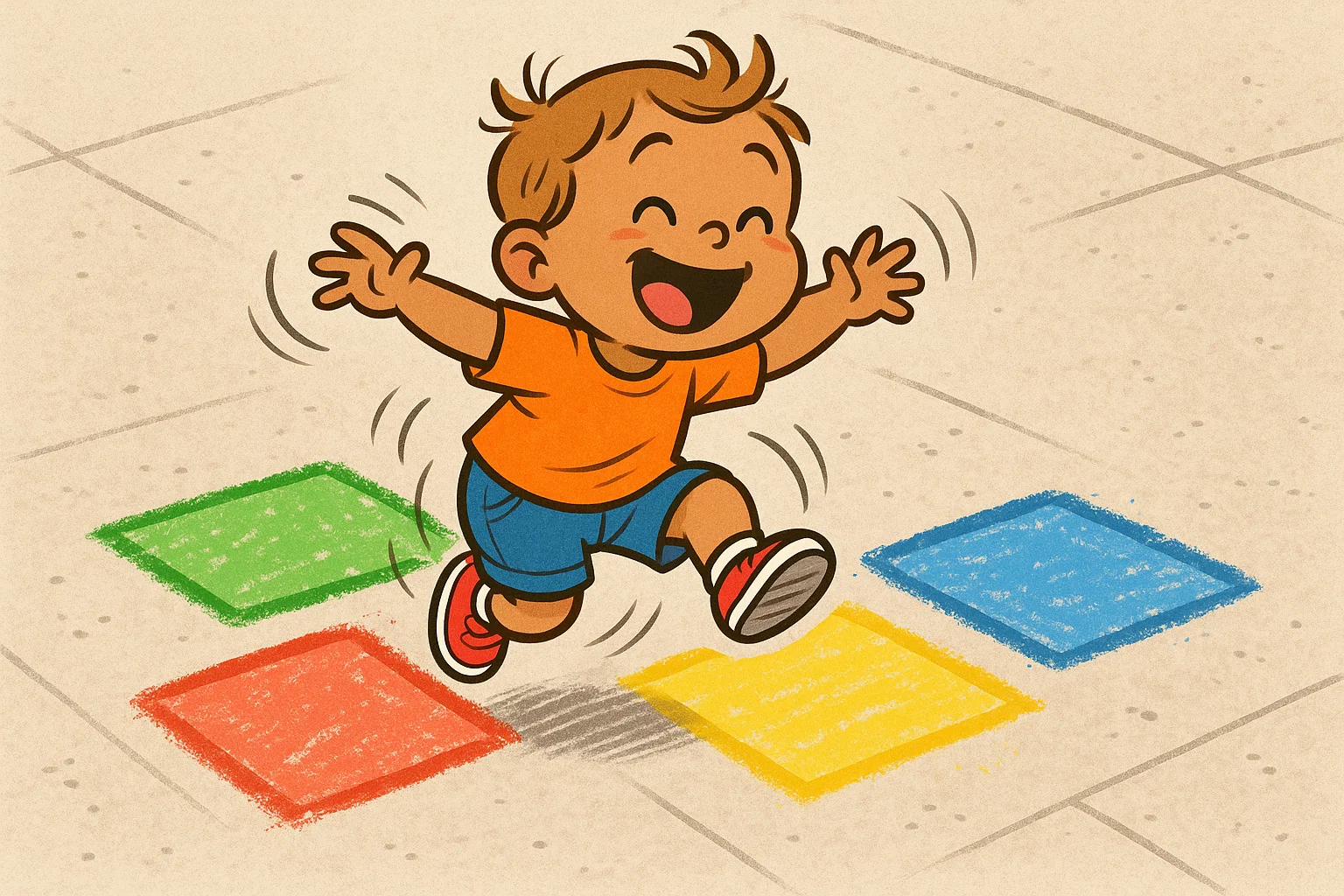
Toddlers learn best when they’re moving! Turn color practice into a full-body workout with games that develop both gross motor skills and cognitive focus simultaneously.
Hopscotch Color Match for Gross Motor Fun
Traditional hopscotch gets an upgrade. Draw a hopscotch grid using different shades for each square. Call out a hue and have your child hop to that square. This variation combines physical activity with recognition and listening comprehension.
As children jump and balance, they’re developing coordination and body awareness. The cognitive task of remembering which shade to find while physically moving builds multitasking abilities that serve them well throughout life.
Full-Body Color-Based Movement Games
Movement activities keep energetic toddlers engaged. Try “Freeze”: play music while children dance, then call out a shade when you pause the music. They must quickly touch something of that hue before freezing in place.
Active movement game ideas:
- “Touch and Go”: Touch a specific shade, then run to another spot
- “Follow the Leader”: Leader chooses paths based on shades they see
- “Animal Moves”: Hop like a bunny to green, crawl like a cat to red
- “Dance Freeze”: Freeze while touching a called-out shade
Another option is commands like: “Hop like a bunny to something green” or “Crawl like a cat to something red.” These let children explore their environment actively while reinforcing knowledge through repeated exposure and physical association.
Tips for Teaching Colors Successfully
Every child learns differently, but a few expert strategies can make the process smoother and more effective for everyone. Here are our essential tips on timing, technique, and screen time balance.
When to Start Teaching Colors: The Right Age
Most children begin recognizing shades between 18 months and 3 years, though every child develops at their own pace. Around 18 months, toddlers can often sort by appearance even if they can’t name them yet. By age 2 or 3, many children start using descriptive words correctly.
Don’t worry if your child seems uninterested initially. Some toddlers focus on other skills first. Keep offering experiences without pressure. When children feel ready, they’ll engage naturally. Forced learning rarely works and can create negative associations.
Quick Tips for Effective Color Introduction
Start with one shade at a time. Spend several days or even weeks focusing on red before introducing another hue. This focused approach prevents overwhelm and allows deeper learning.
| Strategy | Why It Works |
| Start with primary shades | Easier to distinguish and most common in environment |
| Use real objects first | Concrete items more meaningful than abstract concepts |
| Repeat names often | Repetition strengthens neural pathways |
| Point out hues daily | Consistent exposure in natural contexts |
| Make it playful | Learning through play keeps motivation high |
Connect shades to your child’s interests. If they love trucks, talk about red fire trucks and yellow bulldozers. Personal relevance makes information stick better than random examples.
Choosing Safe and Educational Online Coloring Apps
Digital experiences can supplement hands-on activities effectively. Look for apps designed specifically for the toddler age group, with simple interfaces they can navigate independently. Free options exist, though some offer in-app purchases parents should monitor.
Prioritize apps that let children explore without strict rules. Open-ended creativity encourages experimentation. Also check that apps are appropriate for young children—no ads, no inappropriate content, and no need for reading skills they don’t yet have.
Online coloring games should enhance, not replace, physical play. Experts suggest limiting screen time for toddlers to ensure they get adequate movement, social interaction, and hands-on sensory experiences essential for development.
Frequently Asked Questions (FAQ)
Are Online Coloring Games Really Helpful?
Online coloring games offer benefits when used appropriately. They provide immediate feedback, offer endless options without mess, and can teach cause-and-effect relationships. When children tap a shade and see results instantly, they’re learning about digital interfaces while practicing selection. However, digital activities shouldn’t dominate. Physical activities engage more senses and build fine motor skills in ways touchscreens can’t replicate. A balanced approach—both digital and tactile experiences—serves children best.
Which Primary Colors Should Toddlers Learn First?
Start with red, blue, and yellow. These primary shades are distinct, easily found in everyday environments, and mix to create other hues. Once your toddler confidently identifies these three, introduce green, orange, and purple. Some experts suggest starting with red because it’s often the first shade infants can distinguish. Blue and yellow follow naturally. Don’t rush this process. Thorough understanding of a few options matters more than superficial knowledge of many.
Do Coloring Pages Offer Any Real Benefit?
Pages do offer developmental advantages. They help children practice grip strength, hand control, and staying within boundaries—all important pre-writing skills. These activities also teach patience and focus as toddlers work to complete a picture. Choose age-appropriate pages with large spaces and simple outlines. Intricate designs frustrate young children. Let your child choose shades freely rather than insisting that grass must be green or sky must be blue. This creative freedom supports divergent thinking and confidence.
